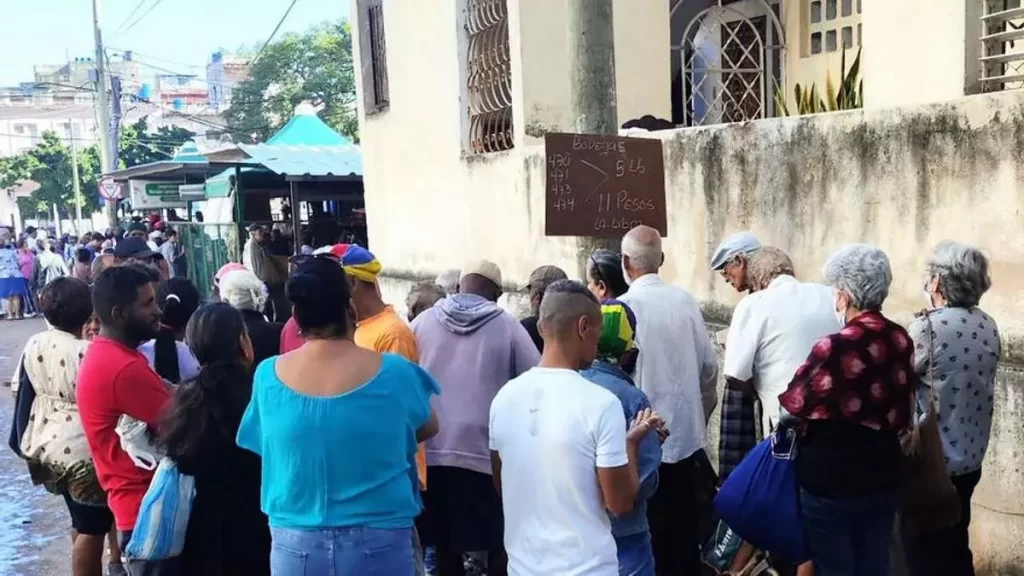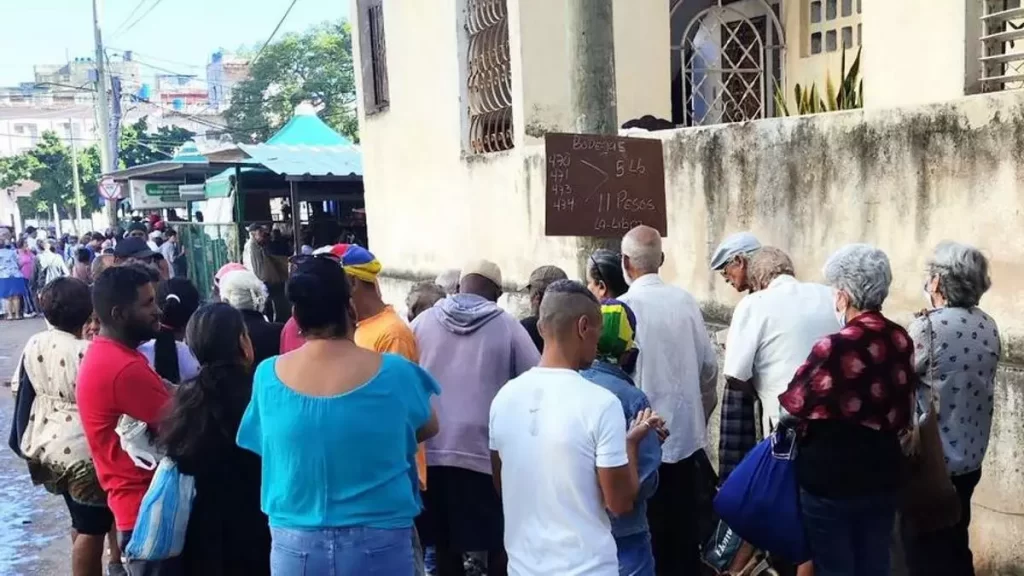
14ymedio, Natalia López Moya, Havana, 25 March 2024 — They crane their necks and look, calculating how long before they reach the counter. The streets are damp after the weekend’s heavy downpours and the water seeps through the soles of their shoes. Most of those who got up early today to line up in front of the kiosks under the blue tents in Central Havana’s Trillo Park are elderly. Their mission: to buy the potatoes that the ration stores are putting on the Cuban capital’s shelves for the first time this year.
In the long line that takes up both sides of the street alongside the park, the topic of conversation is the quality of the product. “I’ve heard they’re rotten,” says a 70-year-old woman who has just gotten in line, “ready for a fight.” She carries a small shopping cart that converts into a chair in case her wait turns out to be a long one. “My daughter sent it to me from the U.S. because she knows that my legs hurt a lot when I stand for a long time.”
On this cool Monday morning, some buyers are wearing jackets, others wear coats. Almost all have bags slung over their shoulders. “They’re selling five pounds per person for 11 pesos and there are two of us in my house,” says a man sporting a Real Madrid shirt. “But it’s been very humid lately and the quality doesn’t look good. This is where you see the effects of the rotten potato plague.”
In spite of complaints about the product’s condition, the overriding feeling among the peope here is one of excitement at seeing the spuds for the first time this year. They know that, once they get them home, they will be able to stretch the daily rice ration and make dishes that have long been absent from Cuban tables such as stuffed potatoes or


